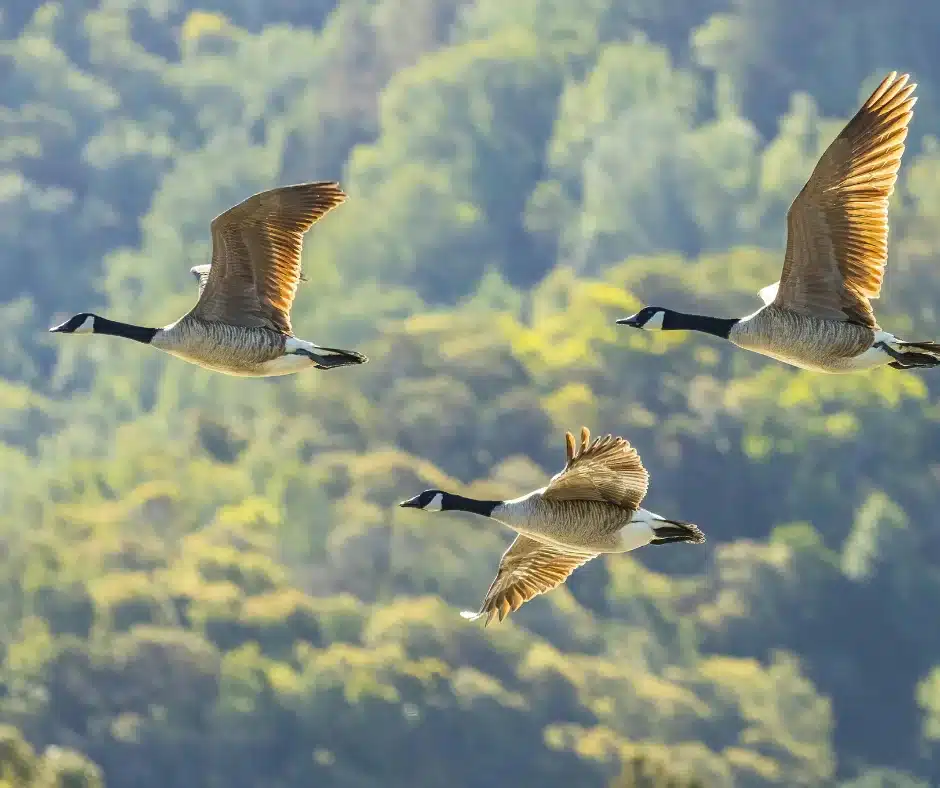The Amazing Bird Journey
Have you ever looked up at the sky and seen a long line of birds flying in a V shape? Maybe you’ve wondered, “Where are they going?” Well, those birds are on a very special journey called migration.
Migration means traveling from one place to another, usually very far away, at the same time each year.
Birds are some of the most famous travelers in the animal world. They cross oceans, mountains, and even deserts just to find food and survive. Some birds fly only a few hundred kilometers, while others fly thousands of kilometers without stopping!
But why do birds migrate? Let’s take a closer look.
What Does Migration Mean?
Migration is a big word, but it’s easy to understand. It simply means moving from one place to another for a reason.
For birds, the main reasons are:
- Food – They need enough insects, seeds, berries, or fish to eat.
- Weather – Warm weather makes it easier to find food and stay alive.
- Safety for chicks – Birds want safe places to lay eggs and raise their young.
So, migration is like a giant seasonal road trip that birds take to survive!
Why Do Birds Leave Their Homes?
You might wonder, “Why don’t birds just stay in one place all year?” The truth is, they can’t.
- In the winter, many insects disappear, rivers freeze, and plants stop growing. This makes food hard to find.
- By flying to warmer places, birds can find plenty of food and safe areas to live.
- When spring comes back, the birds return to their old homes because there’s food again and the weather is nicer.
In other words, migration is nature’s way of helping birds follow the food and the sunshine.
How Do Birds Know When to Migrate?
Birds don’t use calendars like we do, but their bodies and instincts tell them when it’s time to travel.
- Daylight – Birds notice when days get shorter or longer. This is a signal that seasons are changing.
- Temperature – Cold winds remind them winter is coming.
- Internal clock – Birds have a natural sense of timing, like an alarm clock inside their bodies.
Some scientists also believe birds watch the moon and stars to guide them. Imagine flying at night using the stars as your map—amazing, right?
The Great Bird GPS: How Birds Find Their Way
Have you ever gotten lost? Birds almost never do! They use special tricks to find their way:
- The Sun and Stars – Birds use the sky like a giant compass.
- Earth’s Magnetic Field – Birds can sense the invisible magnetic field of our planet, like having a built-in GPS.
- Landmarks – Rivers, mountains, and coastlines help them navigate.
Even small birds can fly thousands of kilometers and reach the exact same tree or pond year after year.

Different Types of Bird Migration
Not all birds migrate in the same way. Here are the main types:
- Long-Distance Migration – Birds like the Arctic Tern travel from the North Pole to the South Pole, thousands of kilometers away.
- Short-Distance Migration – Some birds just move a little south or to a lower mountain area.
- Vertical Migration – Birds in mountains fly down to warmer valleys in winter.
- Partial Migration – In some species, only a part of the group migrates while others stay behind.
This shows that migration is not “one-size-fits-all.” Each bird chooses the path that helps it survive.
Amazing Bird Migration Records
Birds are full of surprises! Here are some fun migration records:
- Arctic Tern – Flies about 70,000 km every year, the longest migration in the animal kingdom.
- Bar-Tailed Godwit – Can fly 11,000 km without stopping once! That’s like flying nonstop from India to the United States.
- Ruby-Throated Hummingbird – So tiny but still flies across the Gulf of Mexico without resting.
Imagine having wings so strong that you could fly halfway across the world!
The Challenges Birds Face During Migration
Migration may sound fun, but it’s also dangerous. Birds face many challenges:
- Bad Weather – Storms, strong winds, and cold can be deadly.
- Predators – Hawks and other animals hunt migrating birds.
- Exhaustion – Some birds fly for days without sleep or food.
- Human dangers – Tall buildings, pollution, and hunting make migration harder.
Despite these challenges, birds keep migrating every year, showing how strong and determined they are.
Why Is Migration Important for Nature?
Migration doesn’t just help birds—it helps the whole planet.
- Birds spread seeds to new places, helping plants grow.
- They control insect populations by eating pests.
- Their journeys connect different parts of the world, making ecosystems healthier.
So, every time you see migrating birds, remember they are nature’s little helpers!
Fun Migration Facts for Kids
- Birds that fly in a V shape save energy because each bird gets a lift from the one in front.
- Some birds migrate at night to avoid predators and keep cool.
- Young birds often migrate for the first time without their parents and still find the right place!
Isn’t that incredible?
What Can We Do to Help Migrating Birds?
Kids like you can play an important role in keeping birds safe:
- Plant trees and flowers – They give birds food and shelter.
- Keep water bowls – Birds get thirsty during long flights.
- Turn off bright lights at night – Lights confuse migrating birds.
- Don’t disturb nests – Birds need peace to rest and raise chicks.
By doing these small things, you can become a bird hero!